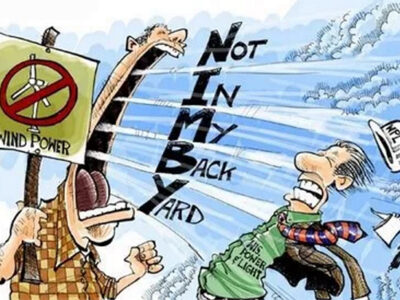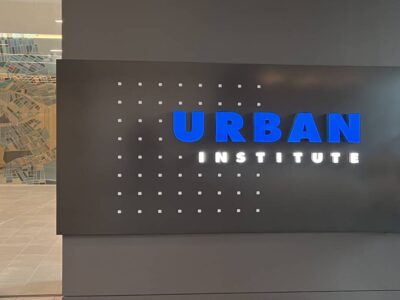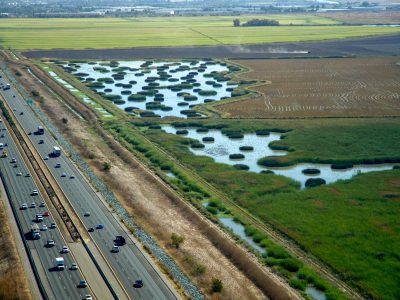Literature
Climate Adaptation Finance: Garbage In, Garbage Out
A new study reveals the hard truth about the lack of real adaptation data.
Today in Science, a new study delicately uses a lot of words to tell us something that many have long suspected: we really don’t know what in the world is going on. The study, by three scholars at Oxford University’s Environmental Change Institute, notes that pretty much all climate adaptation funds focus on inputs — how much has …
Continue reading “Climate Adaptation Finance: Garbage In, Garbage Out”
CONTINUE READINGLeft NIMBYs Strike Out Yet Again
The Urban Institute study that they cite as evidence for stopping housing does not say what they claim.
The recent publication of Ezra Klein’s and Derek Thompson’s Abundance has the Alt-Left NIMBYs out in force. Again. Outraged by Klein and Thompson’s call for zoning reform, they argue that zoning reform has nothing to do with housing affordability. That’s their standard line. What isn’t standard is their reliance on a quality peer-reviewed study from …
Continue reading “Left NIMBYs Strike Out Yet Again”
CONTINUE READINGWhat if DOGE Came for the NFL?
This is what it looks likes like when DOGE takes on a new task.
We know what DOGE is doing to the government. But why stop there? What if they got loose on another part of U.S. society, professional sports? Here’s a picture of what that could look like. June 2026 June 30. New Trump Order: DOGE to Fix Football (NY Times) Trump on Truth Social: “Too long have …
Continue reading “What if DOGE Came for the NFL?”
CONTINUE READINGMrs. Palsgraf, Meet Enviromental Law
A case involving a freakish accident with fireworks casts a big shadow in environmental law.
Today in my first-year Torts class, I teach the Palsgraf case, one of those cases that every lawyer knows by heart. More about Palsgraf in a moment. It’s a tort case, so it won’t surprise you that oil companies use similar arguments against having to pay damages for climate change. But it may be more …
Continue reading “Mrs. Palsgraf, Meet Enviromental Law”
CONTINUE READINGClimate Action for Earth Day
“We have a long way to go, but we’ve started down the path.” I asked my UCLA Emmett Institute colleagues what climate actions give them hope on Earth Day. Here’s how they answered.
Don’t believe what you’ve heard. There is one single thing you can give up that will help address climate change: voter apathy. One-third of eligible voters—80 million Americans—did not vote in the presidential election last time around. Why not? Because they just “weren’t registered” or they “weren’t interested in politics,” according to this Ipsos survey. …
Continue reading “Climate Action for Earth Day”
CONTINUE READINGA decade of unraveling the effects of regulation on water innovation
By Michael Kiparsky, with Dave Smith, Nell Green Nylen, Luke Sherman, Alida Cantor, Anita Milman, Felicia Marcus, David Sedlak, Bernhard Truffer, Christian Binz, Sasha Harris-Lovett, Jeff Lape, Justin Mattingly, Dave Owen, Lars Tummers, Buzz Thompson
In a recent post, my colleagues and I reported on our most recent research output in a long series of projects examining the effect of regulation on water innovation. The post describes a new framework for understanding and, ultimately, improving relationships between regulators and wastewater utility managers who are seeking to implement novel technical solutions, …
Continue reading “A decade of unraveling the effects of regulation on water innovation “
CONTINUE READINGDoes Upzoning Reduce Housing Prices?
A recent careful study says no, but it suffers from unavoidable data and conceptual problems.
A new study on upzoning is out from the highly-respected Urban Institute, and it doesn’t have great news for YIMBYs: We find that reforms that loosen restrictions are associated with a statistically significant 0.8 percent increase in housing supply within three to nine years of reform passage, accounting for new and existing stock. This increase …
Continue reading “Does Upzoning Reduce Housing Prices?”
CONTINUE READINGThe Most Important Environmental Story Of The Week
Fossil Fuel Interests Corrupt Media
No, it’s not the Biden Administration’s successful push to electrify tens of thousands of USPS vehicles. It’s how Matrix LLC, a consultant in the southeast with significant investments in the energy sector, made massive payments to local media outlets to slant their coverage in favor of dirty power and exorbitant electricity rates. Consider Alabama Power, …
Continue reading “The Most Important Environmental Story Of The Week”
CONTINUE READINGCan we govern large-scale green infrastructure for multiple water benefits?
by Lidia Cano Pecharroman, Christopher Williams, Nell Green Nylen, and Michael Kiparsky
Green infrastructure is increasingly emphasized as an alternative, novel path for water infrastructure. The possibilities are intriguing: Can we transition from a landscape dominated by siloed grey infrastructure (think concrete and steel, constructed for one or a few key outcomes like water supply or flood control) to one that centers natural processes in water infrastructure …
Continue reading “Can we govern large-scale green infrastructure for multiple water benefits?”
CONTINUE READINGJefferson’s Bridge
Anticipating modern environmental views, Jefferson viewed nature as a public trust.
Today being the Fourth of July, it seems appropriate to think about how the author of the Declaration of Independence felt about nature. A revealing example involves some land Jefferson owned between Lexington and Roanoke, which he sought to preserve. Two years before the Declaration of Independence, Jefferson purchased 157 acres of land from the …
Continue reading “Jefferson’s Bridge”
CONTINUE READING












